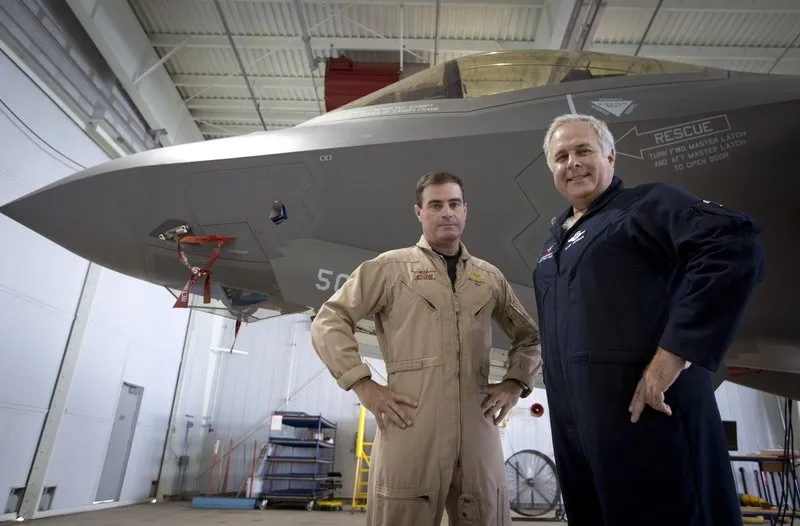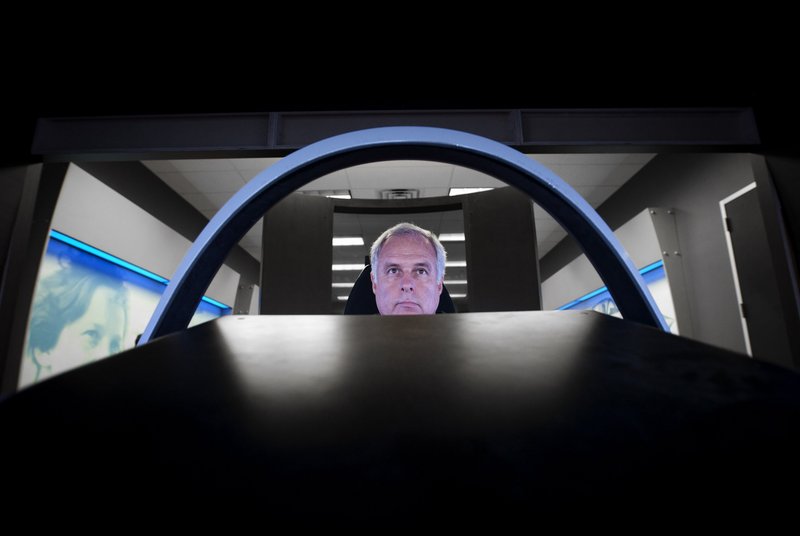FORT WORTH, Texas – Naval Academy graduate Bill Gigliotti knows the stereotypes people conjure up when he tells them he’s a test pilot.
“A guy with a flight suit,” said Gigliotti, who also graduated from the U.S. Navy Fighter Weapons School, known as Topgun. “Throw a scarf around our necks, it’s all glamorous and sexy. But that’s a very small part of what our job is.”
The heroic image of American test pilots goes as far back as 1938, when Clark Gable flew a fictitious experimental flight on an aircraft known as a B-17 bomber. Other films, such as Tom Cruise’s “Top Gun,” added “reckless” and “cocky” to the descriptions.
But Gigliotti and other pilots who are instrumental in developing the nation’s next-generation warfighter — Lockheed Martin’s F-35 Joint Strike Fighter Lightning II — are nothing like “Iceman” and “Maverick.”
Instead, they are an unusual combination of nerdy engineer and brave trailblazer.
“We have a drive and sense of exploring the unknown and helping to be a part of a bigger thing, in making things better from that engineering standpoint,” said Alan Norman, the F-35’s chief test pilot at Lockheed Martin Aeronautics in Fort Worth.
Norman holds two engineering degrees, one of them a doctorate in electrical engineering.
For much of the past decade, the F-35’s development has been plagued by technical setbacks and cost overruns. Test pilots have been at the forefront of fixing problems in the program, which Pentagon leaders recently said is back on track.
Engineering knowledge is key for test pilots, who must understand the intricate layers of wires and systems that control the aircraft before they can troubleshoot.
The pilots push the capabilities of the combat plane to the max, then provide information to design engineers and production employees so they can make improvements.
“The test pilot is the one who bridges the gap between the people who design the plane and the people who fly the plane,” said Gigliotti, who is also based in Fort Worth.
When the F-35 program was launched more than a decade ago, the Pentagon had ambitious goals and a vision to replace existing fighters with fifth-generation combat planes.
The charge was to build three versions of the F-35 at once. One version, with Marine missions in mind, was required to execute a short takeoff and a vertical landing. A lighter version with an internal cannon would be used by the Air Force. The third version, for the Navy, would be modified for carrier landings.
It was also decided that the plane be tested and produced at the same time, a methodology called “concurrency.”
But simultaneously building and testing three versions of the same aircraft proved to be much more complicated than expected.
In 2010, the Pentagon reset the program’s cost projections and shifted the financial risk to Lockheed. Today, the three test pilots interviewed by the Fort Worth Star-Telegram said, the jet is performing more consistently.
“When the airplane has a problem … it behaves as predicted and comes back safely,” said Marine Lt. Col. Ty “O.D.” Bachmann, who mentors future F-35 pilots and test-flies the plane at Eglin Air Force Base in Florida. “It’s really good news.”
Other fighter jet issues — such as problems with the oxygen system in Lockheed’s F-22 Raptor — haven’t been reported on the F-35, Bachmann said.
“The Marine Corps is confident and poised to push the F-35 to the next generation battle space,” he said. “I think that’s really important (to say) at a time when dollars are kind of slim.”
Send questions/comments to the editors.




Success. Please wait for the page to reload. If the page does not reload within 5 seconds, please refresh the page.
Enter your email and password to access comments.
Hi, to comment on stories you must . This profile is in addition to your subscription and website login.
Already have a commenting profile? .
Invalid username/password.
Please check your email to confirm and complete your registration.
Only subscribers are eligible to post comments. Please subscribe or login first for digital access. Here’s why.
Use the form below to reset your password. When you've submitted your account email, we will send an email with a reset code.